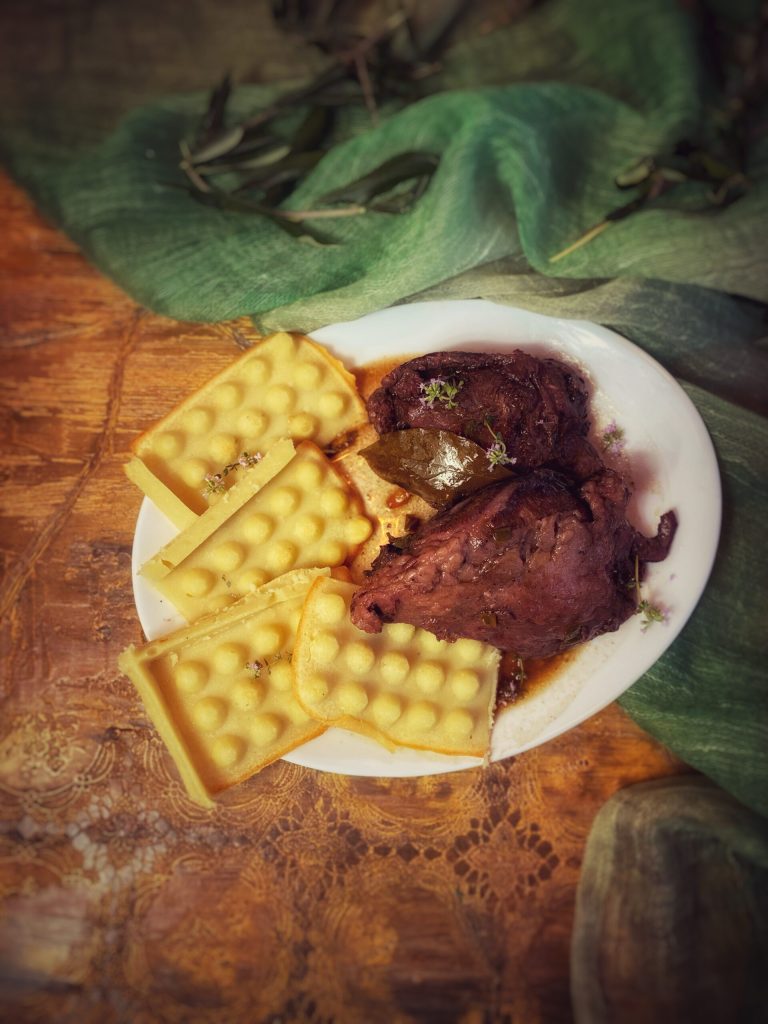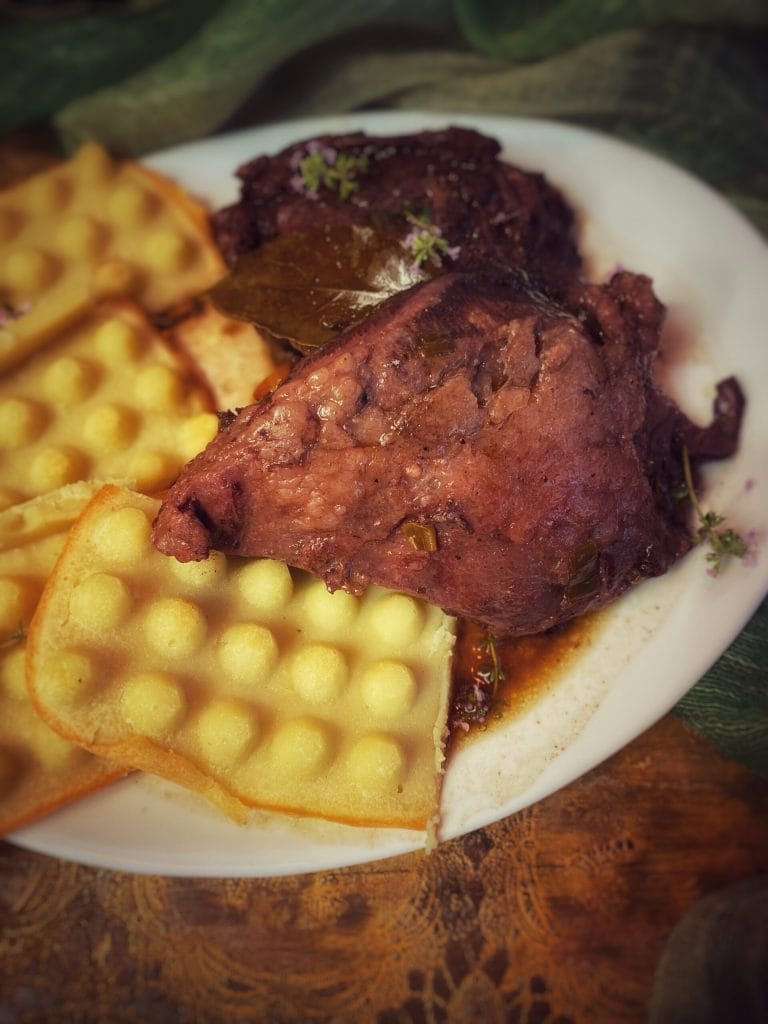The CBT Beef Cheek (Cooked-at-Low-Temperature) is one of the recipes from the Slow Cooking Menu section “Building the Menu”.
The cheek is a cut obtained from the animal’s jaw (in English, they are “beef cheeks”), it is a very tender and gelatinous meat rich in collagen between the fibers, making it suitable for slow cooking.
Cooking at temperatures below 212 °F allows the collagen to dissolve into gelatin, making the meat very tender.
I used my slow cooker for a HIGH mode cook for 4 hours, but you can also cook it sous vide using a rooner, maintaining the water temperature at 158°F for 3 and a half hours.
Finally, I served the CBT beef cheek with a gluten-free savory waffle, baked in the oven.

- Difficulty: Medium
- Cost: Medium
- Preparation time: 5 Minutes
- Portions: 4 people
- Cooking methods: Slow Cooking, Other
- Cuisine: Contemporary
- Seasonality: All seasons
Ingredients
- 1 kg beef cheek
- 1 carrot
- 1 onion
- 4 cloves
- to taste pepper
- to taste juniper
- 3 leaves bay leaves
- 300 ml red wine
- 300 ml beef broth
- 160 g rice flour
- 2 egg whites (beaten to stiff peaks)
- 75 ml butter (melted)
- 2 teaspoons baking powder
- to taste salt
Tools
- 1 Pot crockpot
- 1 Mold waffles
Steps
Sauté the vegetables with the spices, then add the cheek for a few minutes to seal the juices.
Bring the wine to a boil.
Transfer the meat to the crockpot with the sauté, cover with wine and broth. Add the bay leaves.
Cook on HIGH mode for 4 hours.
Reduce the cooking sauce for ten minutes on high heat.
For the savory waffles: make the batter by first mixing the wet ingredients, then the dry ones, and finally combining them.
Transfer to the silicone mold and bake in the oven at 392°F for 13 minutes.
Alternatively, you can use an electric waffle iron.

FAQ (Questions and Answers)
What is the difference between waffles and gaufres?
Identical in shape, but different in the batter, both are cooked on the classic honeycomb plate; for waffles, a sort of semi-liquid batter is prepared with baking powder (sometimes even without, just with whipped egg whites), while gaufres, richer in butter, require yeast and a fundamental ingredient to get as close as possible to the Belgian original (from Liege): pearl sugar.
Pearl sugar resembles granulated sugar for sweets, but has the shape of irregular, fairly hard grains.
The “sucre perlé” does not dissolve inside the dough until it begins to melt at 302°F, leaving the inside of the gaufre very soft and the outside caramelized.

